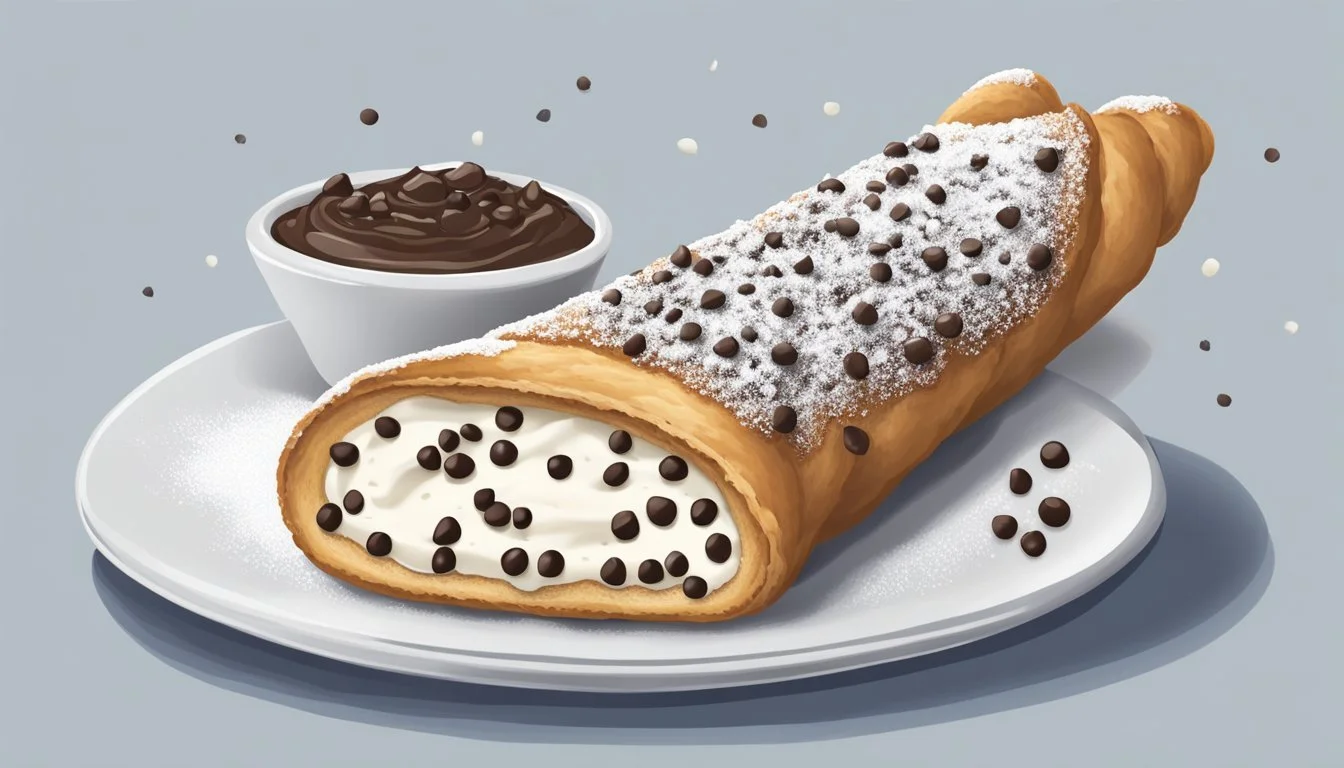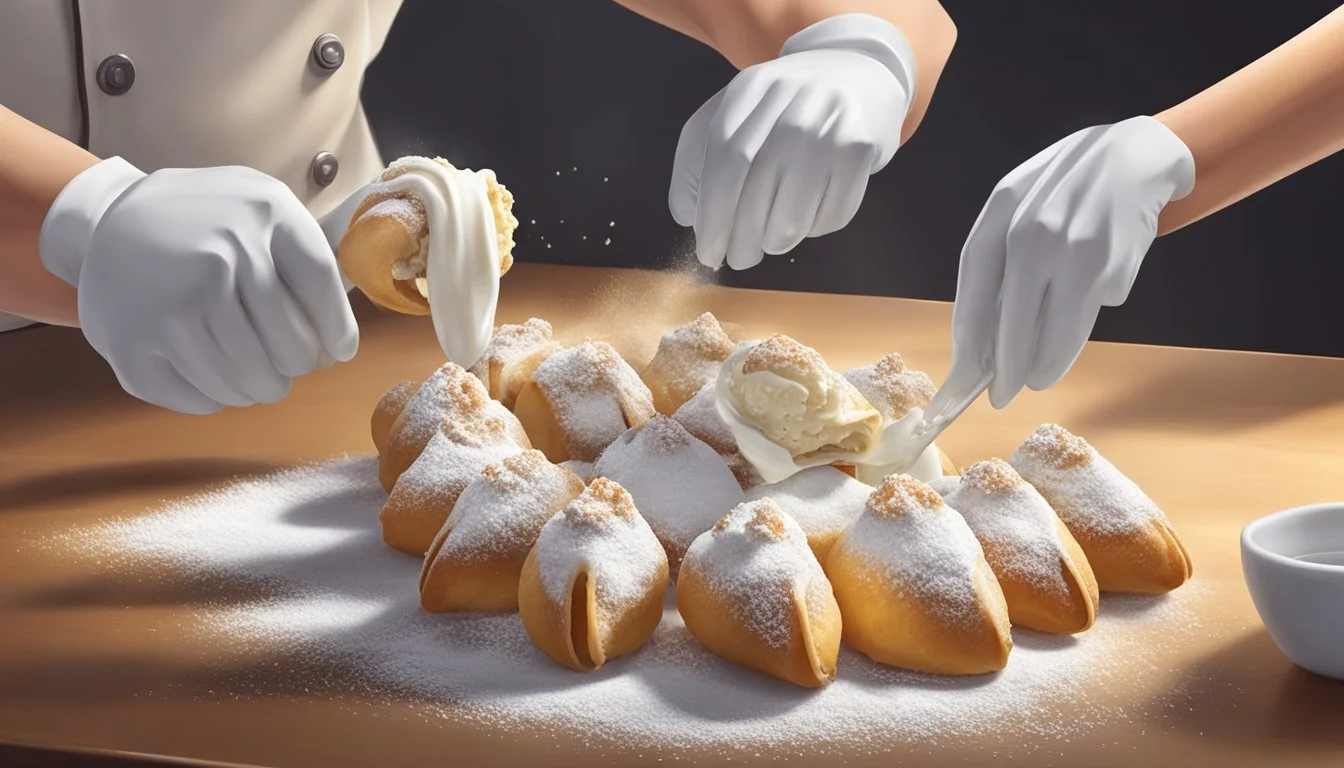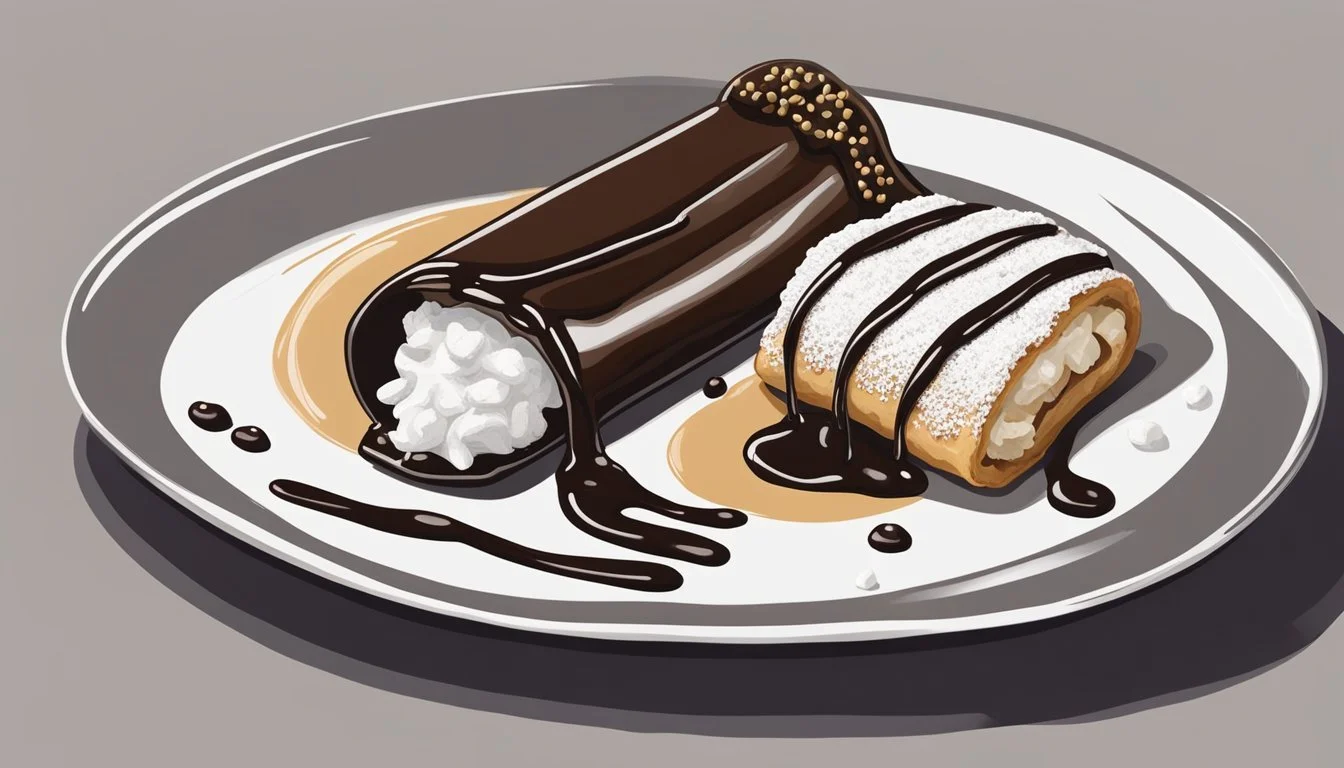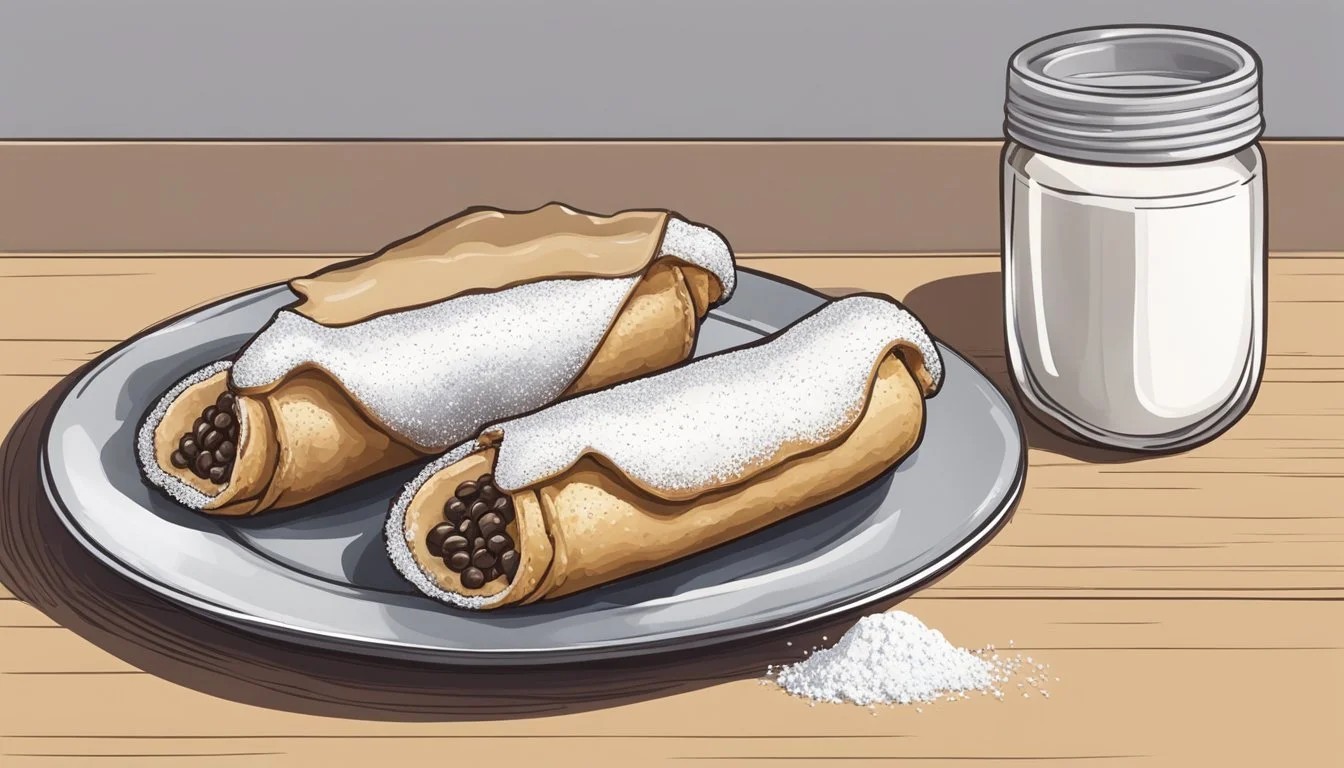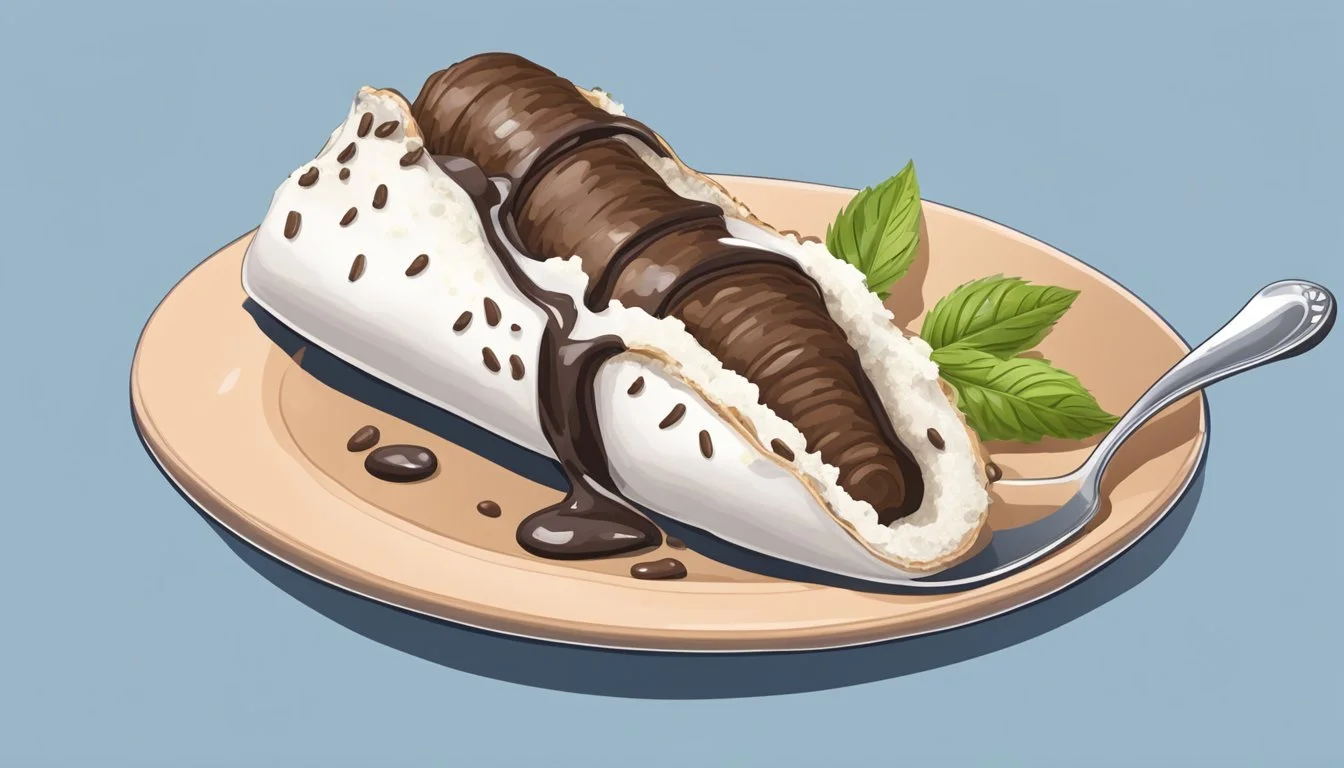How do you eat a cannoli?
Mastering the Art of Indulging in this Italian Pastry
Cannoli are a staple of Italian dessert cuisine, known for their crisp pastry shells and rich, creamy fillings. This indulgent treat has its roots in Sicily, Italy, and has gained international fame for its delightful combination of textures and flavors. Eating a cannoli may seem straightforward, but there is an art to enjoying it properly, ensuring that each bite encapsulates the perfect balance of its components.
Traditionally, cannoli consist of a cylindrical shell of fried pastry dough, filled with a sweet, creamy mixture typically made of ricotta cheese. They often come adorned with additional elements such as chocolate chips, candied fruit, or a dusting of powdered sugar to enhance their appearance and taste. Connoisseurs of this Italian dessert recommend biting from both ends alternately and progressing towards the center to prevent the filling from oozing out and to fully appreciate the harmony of the crunchy shell and the velvety filling.
While variations exist across different regions and bakeries, the essence of a cannoli lies in its fresh, quality ingredients and the skill with which it is assembled. Authentic cannoli are filled to order to maintain the shell's crispness, presenting an exquisite textural contrast with the soft filling. This attention to detail in preparation and consumption elevates the experience of eating a cannoli, affirming its status as one of Italy’s most beloved desserts (What wine goes well with desserts?).
Cannoli Overview
Cannoli, originating from the island of Sicily, are a celebrated Italian dessert known for their distinctive cylindrical shell and delectable creamy filling. This section explores the roots and cultural significance of this traditional Sicilian treat.
Historical Significance
Cannoli emerged on the island of Sicily with deep historical roots dating back to the Arab occupation. They were originally created as a carnival treat, symbolizing fertility and richness. Over time, they have become a year-round staple in Sicilian and Italian patisseries. The name "cannoli" itself is derived from "canna," a reference to the reed-like tubes around which the dough was traditionally formed before being fried to a crispy, golden-brown hue.
Cannoli as an Italian Treat
A classic Italian cannoli consists of a tube-shaped shell of fried pastry dough, which envelops a lightly sweetened filling typically made of ricotta cheese. Authentic Italian cannoli may also incorporate mix-ins like candied citron or chopped chocolate. Variations exist throughout Italy, with some regions offering unique twists on the original dessert recipe. Regardless of the variation, the Sicilian cannoli remains a quintessential representation of the iconic Italian treat, and it continues to be a beloved dessert enjoyed by both locals and visitors of this Mediterranean island.
Ingredients and Variations
Cannolis are a classic Italian dessert known for their fried pastry dough and rich, creamy fillings. The traditional ingredients are often a sweet and simple base for numerous variations and personal touches.
Traditional Ingredients
The classic cannoli recipe consists of a crispy shell made from flour, sugar, and butter, often enhanced with marsala wine for distinct flavor. The filling is traditionally made with whole milk ricotta cheese, combined with sugar and sometimes a hint of cinnamon or citrus zests like orange or lemon to add freshness.
Shell: Flour, sugar, eggs, butter, marsala wine
Filling: Whole milk ricotta cheese, sugar, cinnamon, orange/lemon zest
Optional Additions and Substitutes
Variations can include an array of optional additions such as mini chocolate chips, pistachios, candied fruit, or even a thin layer of dark chocolate coating the interior of the shell. Substitutes might be necessary to cater to different dietary preferences or for a twist on taste.
Additions: Chocolate chips, pistachios, candied cherries
Substitutes: Milk substitutes for a different flavor profile, non-traditional cheeses
Healthy Alternatives
For those conscious of calories and saturated fat, there are ways to enjoy cannolis in a more health-minded fashion. Replacing the traditional filling with low-fat or non-dairy ricotta cheese can lower fat content, while opting for alternative sweeteners or reducing the sugar amount can mitigate the overall sugar intake.
Filling substitutes: Low-fat ricotta cheese, sugar alternatives
Sweet shell alternatives: Whole grain flour, reduced sugar content
Preparing Cannoli Shells
Creating the perfect cannoli shells involves two main steps: crafting a well-mixed dough and executing precise shaping and frying techniques. These elements are essential to achieving the classic crispiness and texture characteristic of authentic cannoli shells.
Making the Dough
The foundation of cannoli shells is a dough made from all-purpose flour, which provides the necessary structure. To make the dough, one starts by incorporating cold, cubed butter into the flour, creating a crumbly texture. After blending, an egg is added to help bind the dough. The inclusion of marsala wine is key—it not only imparts flavor but also the right consistency for rolling. The dough should be kneaded until smooth and then allowed to rest, typically for about an hour, to ensure it's pliable for shaping.
Shaping and Frying
Once rested, the dough is rolled out using a rolling pin to achieve the thinness required for authentic shells. The goal is to roll the dough thinly, ideally to a 1-2 mm thickness. Circular cuts are made—often with a large cookie cutter or round biscuit cutter—to create the base shape for the shells.
After cutting out circles, they are carefully wrapped around cannoli molds. The edges where dough overlaps are sealed with egg white to prevent unraveling during the frying process. To fry, one heats oil—traditionally lard but vegetable oil is a common substitute—in a deep pan or fryer to a specified temperature, usually around 350°F (175°C). The cannoli with molds are then fried until golden and crisp. After frying, the shells are carefully removed from the molds and allowed to cool before filling.
Cannoli Filling
The heart of any cannoli is its filling, traditionally made with ricotta cheese that is sweetened and sometimes combined with mascarpone for extra creaminess. Proper texture and flavor enhancements are vital for the perfect cannoli experience.
Creating a Creamy Filling
A classic cannoli filling starts with ricotta cheese which may be combined with mascarpone to achieve a richer, creamier texture. The key is to ensure the ricotta is drained of excess moisture by setting it in a sieve over a bowl for at least 2 hours in the refrigerator. If the ricotta is notably dry, this drainage step can be skipped. For added richness, some prefer to whip cream to stiff peaks before folding it into the mixture.
Flavoring and Enhancements
After achieving the desired base texture, it's time to flavor the filling. Sugar is mixed in to sweeten the ricotta, while a dash of vanilla extract adds depth to the flavor profile. Traditional recipes may include mini chocolate chips or candied fruits like orange peel to incorporate contrasting textures and flavors. For a touch of spice, a hint of ground cinnamon can be introduced.
Flavor Components Suggestions Sweetness Finely ground sugar Texture Mini chocolate chips Spice Ground cinnamon Citrus Lemon or orange zest Additional Cream Mascarpone
Filling Technique
Once the filling is prepared, it needs to be transferred into the cannoli shell. For this, a piping bag is often used for a smooth and even dispersion of the filling. The tip is inserted into one end of the shell, and gentle pressure is applied to fill the center. If a piping bag is unavailable, a spoon can be used with care to avoid shell breakage. Each end of the filled cannoli may be garnished with additional mini chocolate chips or chopped pistachios to embellish the presentation before serving.
Assembly and Decoration
Assembling a cannoli involves filling the crisp shells with a creamy, sweetened ricotta filling, followed by adding visual and taste-pleasing garnishes. The key to a perfect cannoli is to maintain the shell's crunchiness while complementing the creamy filling with appropriate garnishes.
Filling the Shells
To fill the cannoli shells, one should use a piping bag filled with cannoli cream. The cream typically consists of ricotta cheese mixed with powdered sugar and, in some recipes, chocolate chips or candied fruit. To assemble, carefully insert the tip of the piping bag into one end of a shell, and squeeze gently until the shell is filled halfway. Then, fill from the other end to ensure the cream spreads evenly throughout the tube.
Final Touches and Garnish
Once the shells are filled, it's time for garnishing, which enhances both the visual appeal and the flavor. Dip the ends of the cannoli into chocolate, nuts, or a combination thereof. Then, a light sprinkle of powdered sugar adds a classic finish. For an added burst of flavor and color, consider garnishing the ends with a small amount of chopped candied fruit.
Serving Suggestions
Cannoli should be served soon after they are filled to preserve the shell's signature crispness. Place them on a plate accompanied by a cup of coffee or espresso to complement their sweet richness. Some prefer to chill the filled cannoli briefly to let the filling set, but they should not be stored for too long as the shells may become soggy.
Preservation and Storage
Proper preservation and storage are crucial for maintaining the freshness and quality of cannoli. This section focuses on effective methods to store unused shells and to freeze and thaw cannoli for optimal enjoyment.
Storing Unused Shells
Cannoli shells are delicate and should be stored with care to prevent them from becoming soggy or crushed. It is recommended that unused shells should be kept in an airtight container to protect them from moisture and preserve their crispness. A hard-sided container is most suitable for this purpose. For best results, place the container in a dark and cool area, such as a pantry, where the temperature doesn't fluctuate.
Freezing and Thawing Cannoli
Cannoli can be frozen, both as filled pastries or as shells alone. To freeze cannoli shells, they should be placed in an airtight container to prevent freezer burn and maintain their structure. When freezing filled cannolis, it's advisable to freeze the shells and filling separately to avoid sogginess. Cannoli shells will last a few weeks in the freezer with good quality.
To thaw cannoli, it is important to do so gradually by transferring them from the freezer to the refrigerator. This slow process helps to maintain the quality of the shells and filling. Thawed cannoli should be consumed quickly to ensure the best taste and texture.
Nutritional Information
Cannoli, a classic Italian dessert, comes with various nutritional profiles depending on the filling and size. Generally, a medium-sized cannoli has about 240 calories. Sizes differ; mini cannoli are around 85 calories each, whereas more indulgent recipes can spike the calorie count to approximately 340 calories per serving.
The calorie content is heavily influenced by the ingredients used in both the shell and the filling. Ricotta cheese is a common filling base, which contributes protein but also saturated fat. For instance, a cannoli weighing about 120 grams might contain around 22 grams of fat. It's important to note the type of fat, as the presence of saturated fat impacts nutritional value and dietary considerations.
Below is a nutritional breakdown for a standard cannoli:
Calories: 240 to 340
Total Fat: 22g
Saturated Fat: Varies between brands/recipes
Carbohydrates: Approximately 29g to 46g
Protein: 6g to 14g
Additional Nutrients: Small amounts of calcium, iron, and vitamin A
These figures can fluctuate based on the specific recipe and preparation method used. The addition of chocolate chips, candied fruit, or dips can further alter the nutritional information by increasing the calorie and sugar content. Consumers should also consider portion sizes and frequency of consumption as part of their overall dietary habits.
Cannoli Variations and Recipes
Cannoli, a staple of Sicilian cuisine, has undergone regional adaptation and modern innovation. The classic dessert of fried pastry tubes filled with a sweet, creamy mixture has many variations that include different fillings, shell textures, and additional ingredients.
Regional Twists
In Sicily, the birthplace of cannoli, Sicilian cannoli typically feature a ricotta-based filling. This traditional recipe may include ingredients such as sugar, cinnamon, and sometimes, cocoa, to complement the ricotta. The iconic shells are often infused with Marsala wine for flavor. Additionally, it's common to find Sicilian cannoli garnished with orange zest, hinting at the island's citrus bounty.
While the Sicilian variety remains the most famous, other regions have introduced their unique touch. For example, some Italian bakeries will add candied fruits or chocolate chips to align with local palate preferences. Italian cannoli found in different regions might vary slightly in sweetness or shell composition to suit the local tastes.
Modern Takes on a Classic
As with many traditional dishes, chefs have created contemporary versions of cannoli that appeal to a modern audience. These inventive takes on the classic can range from incorporating novel ingredients to deconstructing the dessert's form. One such example is cannoli pound cake, which embodies the essence of cannoli in a different structure. This dessert includes the creamy texture of ricotta and the citrusy aroma of orange zest within a dense, buttery cake.
Moreover, bakers nowadays experiment with filling flavors, including but not limited to pistachio, chocolate, lemon, and even savory versions. Size variations are also prevalent, with some establishments serving "mini cannoli" as bite-sized treats. Recipe tips for these modern interpretations often suggest personal tweaks, allowing individuals to express creativity in their renditions of the beloved cannoli.
Used adeptly, these variations can turn an Italian cannoli recipe into a personal statement, reflecting the chef's individual style while honoring the roots of this quintessential Italian dessert.
Frequently Asked Questions
In this section, they'll explore common inquiries about the consumption and preparation of cannoli, along with solutions for typical issues encountered during the cannoli-making process.
Common Cannoli Queries
Where can one store cannoli? It is recommended to keep the filling and shells separate until ready to serve. The ricotta cheese filling should be stored in a refrigerated environment, while the shells can be kept at room temperature in an airtight container.
What is the traditional cannoli filling? Traditional cannoli are filled with a sweet, creamy mix predominantly made from ricotta cheese, often enhanced with ingredients like powdered sugar, vanilla, cinnamon, and chocolate chips.
Troubleshooting the Cannoli Process
How does one prevent cannoli shells from becoming soggy? Ensure the dough is fried until golden and crisp, and only fill cannoli shells with the ricotta mixture just before serving to maintain their crunch.
What equipment is necessary for making cannoli? Essential equipment includes cannoli tubes for shaping the dough, a rolling pin, a circle cutter or glass, a pastry bag for piping the filling, and a pot for deep-frying the dough.
Remember, practice makes perfect, and troubleshooting is part of the learning process when becoming proficient in making and serving this classic Italian dessert.

